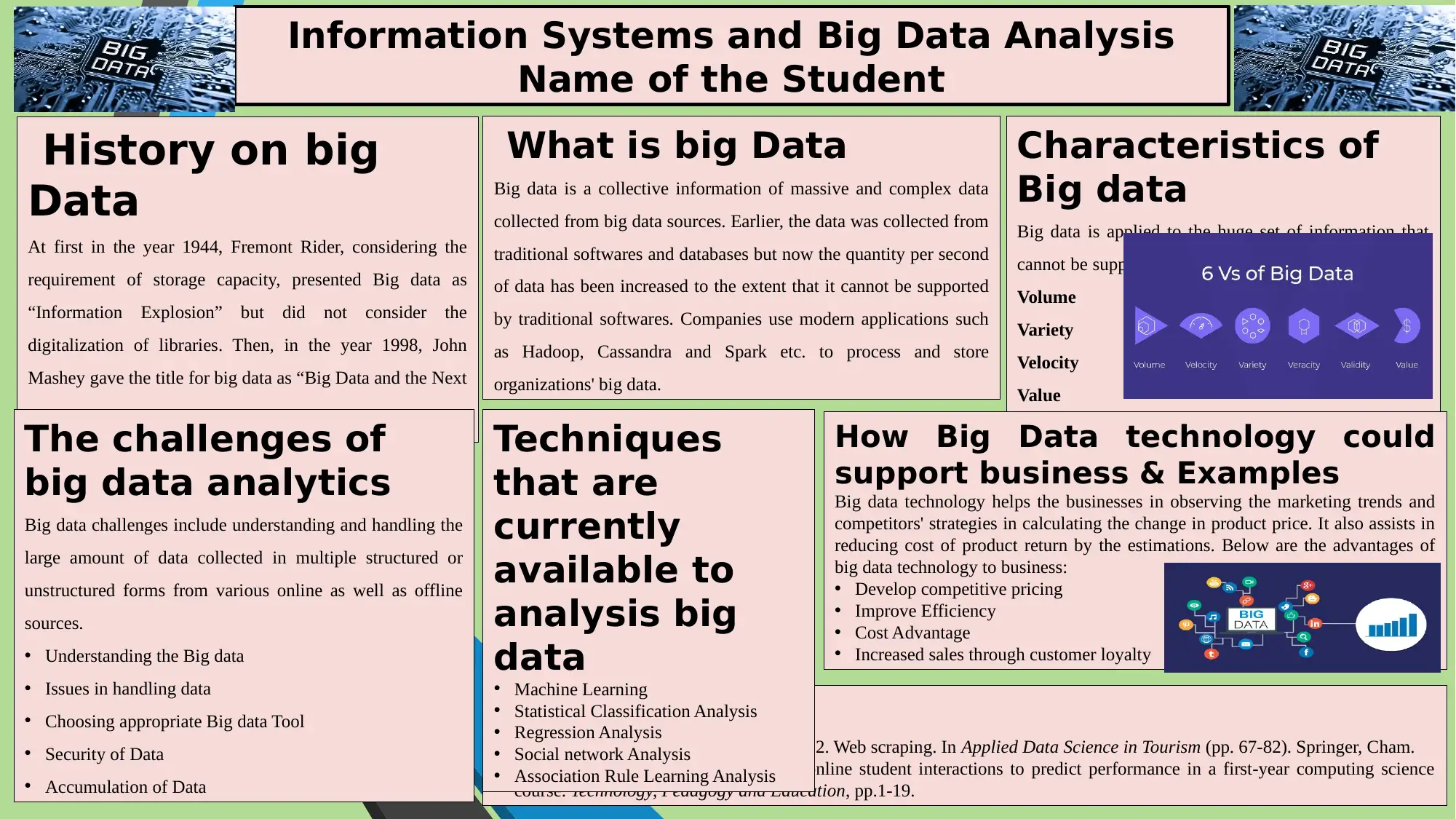Information Systems and Big Data Analysis: Techniques and Business
VerifiedAdded on 2023/06/14
|1
|408
|410
Report
AI Summary
This report provides a comprehensive overview of big data analysis within the context of information systems. It begins by defining big data and tracing its historical roots, highlighting key milestones such as Fremont Rider's consideration of digitalization and John Mashey's coining of the term. The report identifies challenges associated with big data analytics, including understanding and handling large volumes of structured and unstructured data, selecting appropriate tools, and ensuring data security. Furthermore, it explores various techniques currently available for analyzing big data, such as machine learning, statistical classification analysis, regression analysis, social analysis, and association rule learning. The report also discusses the characteristics of big data, emphasizing volume, variety, velocity, value, and veracity. Finally, it examines how big data technology supports businesses by observing marketing trends, competitor strategies, and product pricing, ultimately leading to competitive pricing, improved efficiency, cost advantages, and increased sales through customer loyalty.


![[object Object]](/_next/static/media/star-bottom.7253800d.svg)